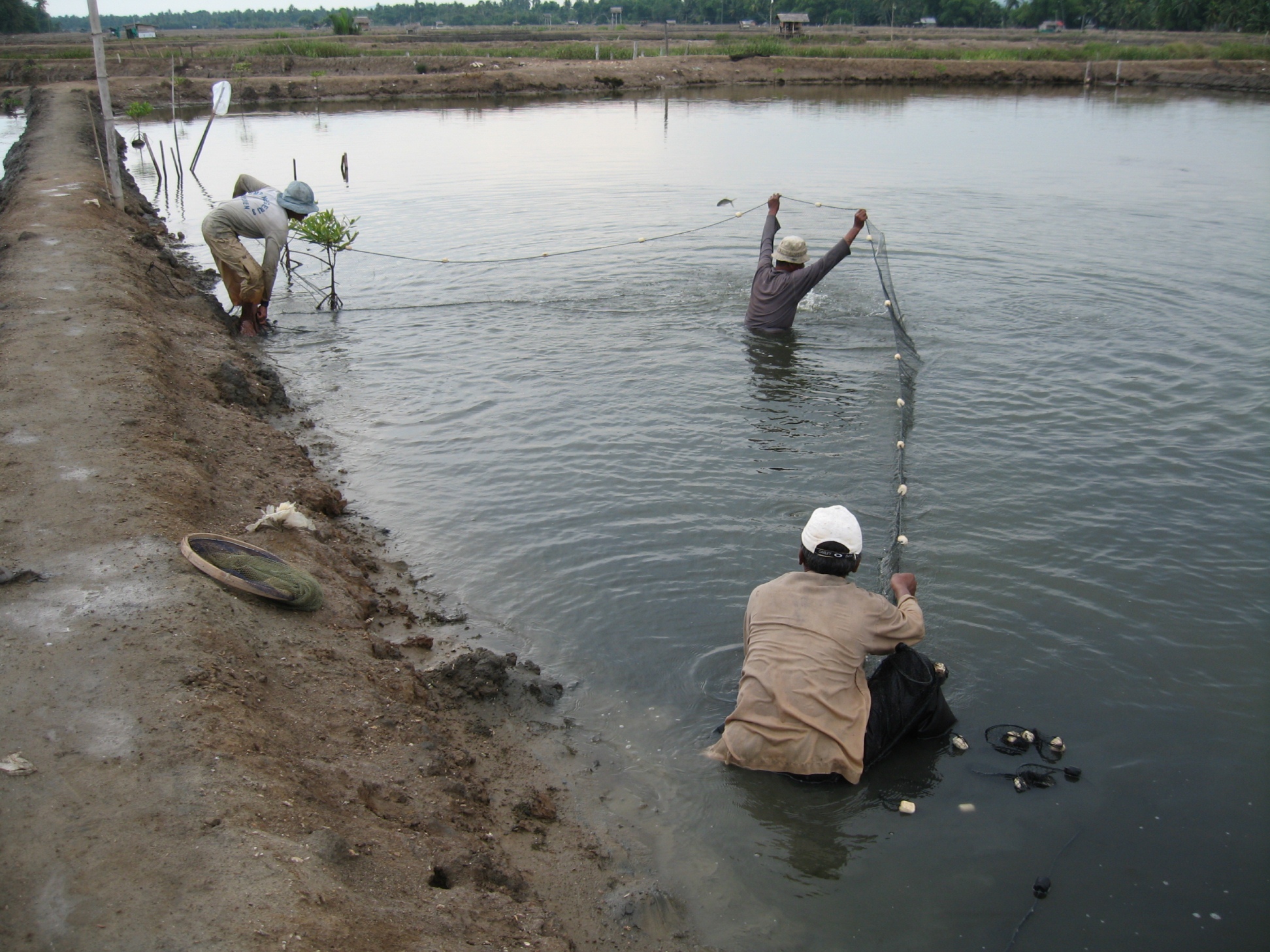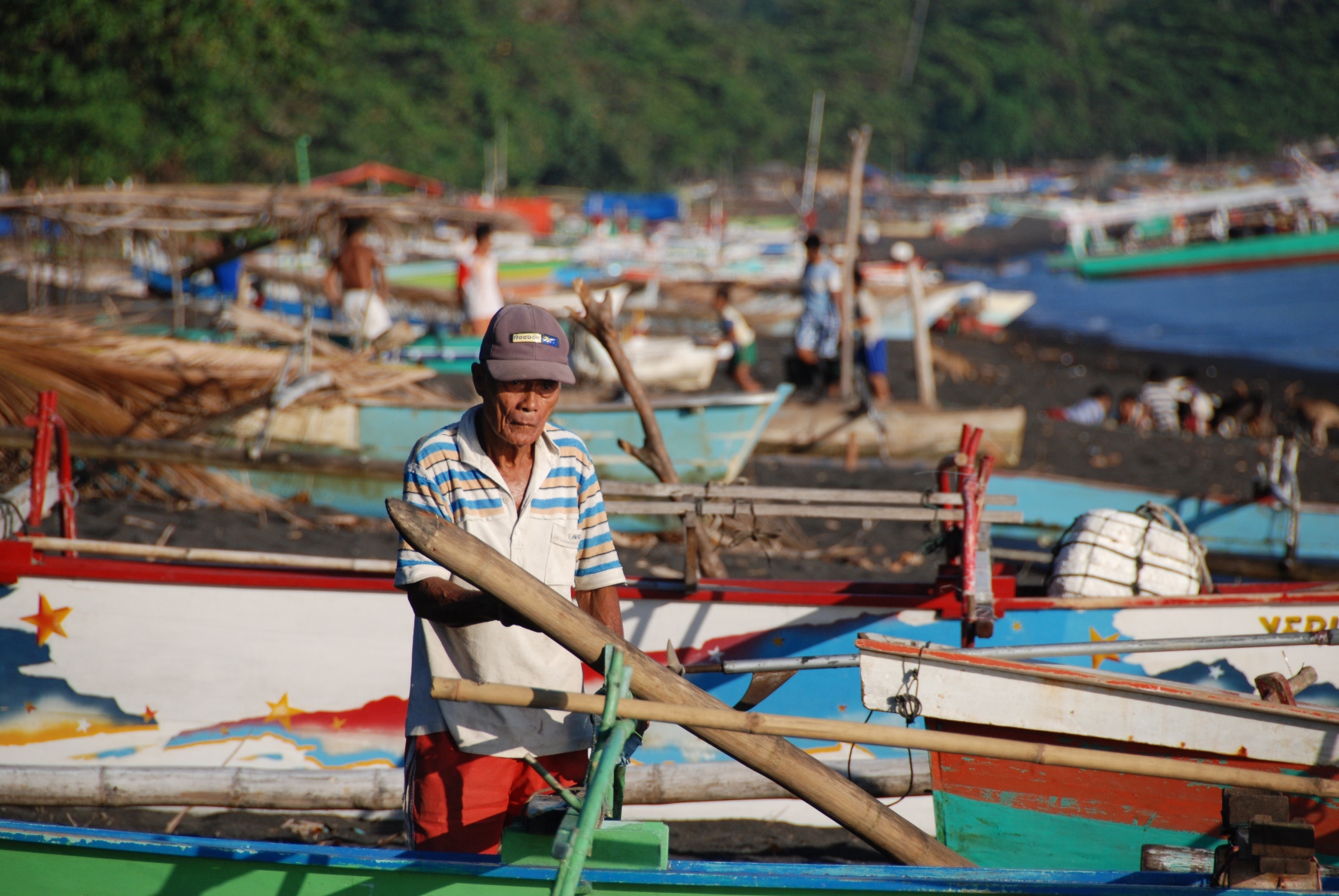Mike Rimmer
Fish consumption in Indonesia is almost double the global average - Yogi Sumule
Even a cursory glance at a map of Indonesia will show the importance of its marine resources: an archipelagic nation stretching more than 5,000 kilometres (in the words of a popular song ‘from Sabang to Merauke’) and comprising over 17,000 islands. Fish is an important protein source with consumption around 32 kilograms per person per year, compared with a global average of 19 kilograms.
Fisheries are an important aspect of food security in Indonesia, providing sources of high-quality protein, as well as essential micro-nutrients. The term ‘fisheries’ usually covers both ‘capture fisheries’ (where fishers catch fish from the open seas using nets or lines) and ‘aquaculture’ where fish are grown from a small size in a contained area. The sale of seafood products is an important source of income in many rural and island communities. Naturally therefore, preserving and enhancing food security of fisheries is a priority for the Indonesian government. But it faces challenges implementing policies in an industry that is geographically so spread out.
Challenges for capture fisheries
Fishing in Indonesia ranges from small-scale local fishing to large-scale commercial fishing for internationally-traded species such as tuna. The diversity of fisheries, large number of people involved and sheer geographic scale of Indonesia’s marine waters creates a complex situation for the development and implementation of fisheries management policies. On the one end of the scale, Indonesian fisheries management works with various large fishers in shared stocks, fisheries for which are governed by a series of international treaties developed and supervised by management commissions. This international oversight usually deals with endangered and over-fished stocks, like tuna. In contrast, many of the fishers throughout the archipelago are small-scale, catching fish for home consumption and sale in local wet markets.
Several factors impact on food security for Indonesian capture fisheries. The first, and most obvious, is over-fishing. In many cases there are too many fishers chasing too many fish. Although fishing is regulated in various ways, enforcement is weak and often focuses on incursions by fishing vessels from neighbouring countries.
The second factor is environmental damage. Fishers are notorious for using potassium cyanide to ‘stun’ the fish (at low doses potassium cyanide acts as an anaesthetic, allowing the fish to be captured with a net; at higher doses it is fatal), but the cyanide also kills coral on the reef where the fish are caught. More devastating still is ‘blast’ fishing, where fishers use explosives to kill and stun fish. ‘Blast’ fishing is responsible for substantial damage to coral reefs throughout Asia.
 Food security in fisheries in Indonesia dates to at least the 15th century, when fishers trapped or held fish in ponds to ensure that fish were available when weather or other influences precluded fishing. Here farmers in Bireuen district, Aceh province, harvest milkfish from a brackishwater pond or tambak. - Yogi Sumule
Food security in fisheries in Indonesia dates to at least the 15th century, when fishers trapped or held fish in ponds to ensure that fish were available when weather or other influences precluded fishing. Here farmers in Bireuen district, Aceh province, harvest milkfish from a brackishwater pond or tambak. - Yogi Sumule
Traditional and commercial aquaculture
Indonesia has a long history of aquaculture, with the first reports dating from around 1400 when Javanese law prescribed punitive measures against those who stole from fresh or salt water ponds. ‘Traditional’ brackish water aquaculture began as a mechanism for fishers to ensure food security, by providing food when live capture fishing was not possible. Milkfish (Chanos chanos) – a species popular in Java and Sumatra – were either trapped or stocked in coastal ponds and allowed to grow in the ponds for several months, until they reached a harvestable size. In western Indonesia (Sumatra, Java and Kalimantan) freshwater aquaculture has long been a common form of farming and production of freshwater species now dominates aquaculture production on these islands.
Since the 1980s, Indonesian aquaculture has seen the development of large commercial farms – particularly for shrimp. This has led to what has been termed a ‘dualistic’ development in shrimp farming: large commercial farms alongside smaller traditional ponds. Recent research has shown that the larger ‘modern’ shrimp farms produce substantially more than traditional ponds. For example, a small-hold farmer may produce 100–150 kilograms per hectare of pond, whereas an intensive farm may produce 10,000 kilograms per hectare. Overall, as little as five per cent of Indonesian shrimp production may be from small-hold farmers, although the production area of traditional ponds vastly exceeds that of the larger commercial farms.
Despite their low production rates, ‘traditional’ production systems dominate freshwater and brackishwater aquaculture in Indonesia in terms of the number of farmers involved. Data from the Indonesian government indicates that there were around 3.4 million aquaculture farmers in 2010, and most of these are categorised as small-scale farmers.
Enhancing food security
The Ministry of Marine Affairs and Fisheries estimates that there are around six million people directly employed as fishers or fish farmers, but this figure does not include contract labour or those employed in input supply like boat-building, or in post-harvest activities such as processing, transport and sales. Most importantly, many of those directly employed in fisheries and aquaculture are in regional or remote parts of Indonesia, where income-generating opportunities are limited.
The geographic spread of those employed in fisheries and aquaculture makes it extremely difficult to implement policies to enhance fisheries-related food security. For the dual challenges of environmental degradation and over-fishing in capture fishing, reaching remote communities for education and policing is difficult and expensive.
Even in areas where access is relatively easy, such as on Java and Sumatra, many fishers and aquaculture farmers are poorly educated and have limited access to technical information. Technical extension services are usually poor, so farmers have little opportunity to improve their aquaculture systems and compete with larger fish-farmers.
Like most national governments, the Indonesian government is focused on increasing production from agriculture and fisheries. To achieve this, it is easier to concentrate on the major commercial producers who produce the bulk of seafood products. In contrast, assisting small-scale farmers is expensive, difficult and unlikely to yield the desired level of production increase. However, these farmers need technical, financial and policy support to continue to produce for direct consumption and sale. These two approaches – increasing production through large-scale commercial operations, and supporting food security for vulnerable small-scale fishers and aquaculture farmers – are difficult challenges that will need to be met as Indonesia enhances its food security for the future.
Dr Michael A. Rimmer (mike.rimmer@sydney.edu.au) is a Senior Research Fellow in the Faculty of Veterinary Science at the University of Sydney. He has worked in Indonesia since 1999 and has been based there full-time since 2006.
